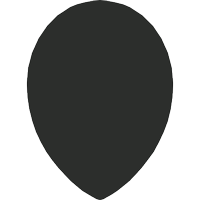Innovation & Strategy Creative Lead
Guiding innovation, strategy, and brand essence into defining products
At the intersection of creativity and commerce, the journey of physical product creation from concept to consumer are guided trough the hybrid role that harmonises innovation with strategic vision and infuses each product with a cohesive brand language and business vision, ensuring a seamless narrative from inception to launch.
Innovation is the heartbeat—spotting untapped opportunities, setting future-oriented directions.
Strategy provides the blueprint—defining growth roadmaps, aligning creative outcomes with business goals, and coordinating the synergy of cross-disciplinary teams.
Creative Leadership ensures that every detail resonates with the brand’s core, guiding design, innovation, development, brand & marketing teams to maintain aesthetic and conceptual integrity.
From the idea inception to market presence, this role crafts a cohesive experience that bridges the gap between visionary concepts and tangible products. It’s a practice that ensures every touchpoint, from idea to production to promotion, is infused with a consistent and compelling brand narrative.
Seamlessly blending innovation, strategy, and brand identity into market-ready masterpieces.
Art of Conscious Self-Exploration
An exploration of presence through space, matter, and meditative expression
This artistic approach centers on the creation of spaces, objects, and installations that function not merely as aesthetic compositions, but as tools for conscious presence and shared introspection.
Deeply rooted in a process of internal alignment, the work resists conventional frameworks of design and commercial value, favouring a slower, more intuitive rhythm guided by meditative awareness.
Through this lens, material becomes a medium for emotional resonance. Each gesture—whether spatial, sculptural, or performative—emerges from a place of lived experience, offering a grounded yet fluid expression of inner states.
This sensitivity translates into environments that feel less like exhibitions and more like thresholds—inviting visitors to pause, reflect, and reconnect with the subtle layers of their own being.
Rather than reinforcing boundaries between maker and viewer, object and subject, the process seeks to dissolve them. The creative act becomes a porous exchange: a practice of presence that blurs distinctions between work and self, art and life.
The result is a body of work that operates as a quiet architecture of meaning—an evolving “home” built through intuition, ritual, and the desire to live in harmony with the world around and within.
In this way, the practice offers more than a visual experience—it becomes a meditative offering, a space of belonging, and a reminder of the strength found in stillness.





